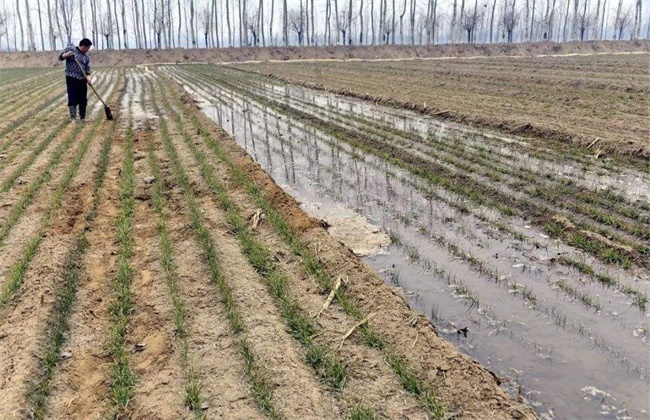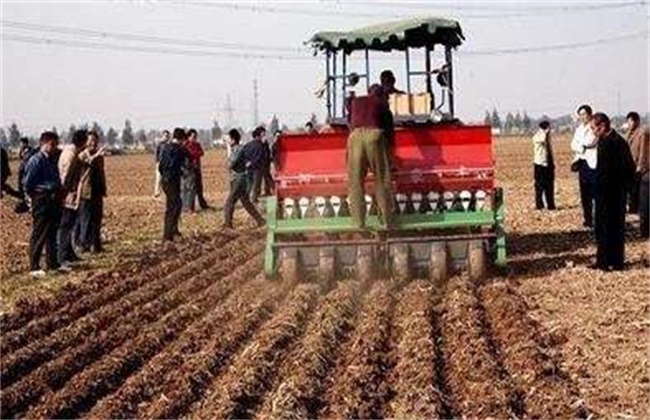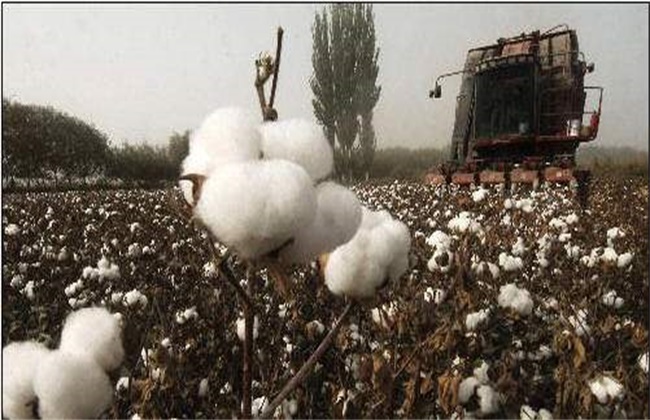How to water wheat for overwintering
With the temperature gradually getting cooler, winter wheat has been sown in most areas, and soon after the emergence of winter wheat, farmers will start watering overwintering water. Many people are curious about the role of this overwintering water. Let's learn about it with Xiaobian.

The function of wheat watering overwintering water
1. Watering the wheat over the winter can make the wheat have sufficient water during the overwintering period, which is of great benefit to the pre-winter tillering and the promotion of new tillering, and can play the role of using the winter water in spring and preventing the spring drought.
2. Watering over winter water can also improve the thermal conductivity of soil and reduce the range of temperature change in the field, so as to avoid freezing death of winter wheat seedlings due to drastic changes in temperature.
3. Watering overwintering water can also settle the soil, make up the soil gap, eliminate the overwintering pathogens and pests hidden in it, which is beneficial to tillering and reduce the base number of diseases and insect pests.
4. for saline-alkali soil, it can not only reduce soil salinization and seedling protection, but also promote microbial activity, coupled with fertilizer goose decomposition, can promote the growth of wheat after turning green.
Second, how to water according to the temperature
The temperature of winter wheat irrigating frozen water is about 3 ℃. If watering too early, the soil is easy to harden, and the soil moisture is obviously insufficient after overwintering. However, if the water is irrigated too late, the water is not easy to seep, which will lead to freezing on the surface and cause freezing damage to wheat seedlings, so timely irrigation is very important. According to the experiment, if the daily average temperature is 0-1.5 degrees, the ground will freeze and die, and it is most suitable to finish watering the seedlings when the average temperature drops to 7-8 degrees.
Matters needing attention
Watering frozen water for wheat should look at the sky, the earth and the seedlings. First of all, the watering effect is the best when the autumn rain is scarce and the winter is cold and dry, and it should be carried out when the daily average temperature is about 3 ℃. The premature temperature is too high and the evaporation is large, which can not play the role of storing water and preserving soil moisture, and it will cause the wheat seedlings to grow; too late the temperature is too low, so as to cause the ground water to freeze. When the soil moisture is insufficient, the ground temperature is on the low side, so it is not suitable for flood irrigation, otherwise it will cause wheat seedlings to turn red, yellow, and even die. The soil moisture of wheat seedlings in early stubble is generally better, which can be irrigated slowly or not. In order to prevent flood irrigation from causing stamping, flooding and silting, and harming wheat seedlings, it is necessary to hoe and loosen the soil after irrigation to prevent consolidation, cracking and ventilation, injuring roots and dead seedlings.
The above is how to water wheat overwintering water introduction, hope to help you, want to know more related knowledge, please follow us.
Related
- The first cup of black tea in spring, the flavor and history of tea gardens in Kenya, Africa
- The computer can not only choose potatoes, but also grow tea rice. AI will grow winter oolong tea champion.
- It is not only the inflated tea bitten by insects, but also engraved with the four seasons tea in Beipu.
- The Oriental Beauty Tea Festival in Zhuxian County takes the stage at the weekend to experience the plus-size feast of oil tea.
- & quot; Oriental Beauty Tea & Exploration of Emei in Hsinchu, the hometown of quot;
- The new variety of strawberry "Tainong 1" dessert is the first choice with mellow aroma. Crimson gorgeous
- History of Tea in Taiwan: from Wild Inner Mountain to Export Tea Garden
- Two types of Taiwan Oriental Beauty Black Tea won the British three-Star Award for Childhood Tea Xiang Zhang Jiaqi changed from pilot to champion tea maker.
- Banana species and varieties: the planting history of Taiwan Xianren banana and dwarf banana is long, is banana disease resistant?
- Coffee planting Technology: Qianjie Coffee from Seedling to harvesting



